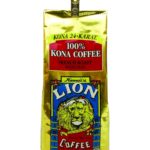Coffee, the brew, that more than half the people around the world is needed to kick start the day. Ever wondered about the origins of this humble but oh so important cup of joy and how it landed up on the shelf in your neighborhood store? Did you also know that everyday there are about four hundred million cups of coffee consumed around the world? It all began about two thousand years ago and today it has a market where the output as a commodity is a close second to petroleum in its dollar value.
Coffee by itself is broadly categorized into two main types - the Arabia which started out on the Arabian Peninsula and the Robusta which has twice the amount of caffeine. Apart from this there are at least a dozen bean varieties in existence today. The beans are green or red in type and here the red is known for its higher aroma and lower acid content and it is this type that is used to make some of the finer coffees of the world.
The coffee berry or 'cherry' as it is called, is not of any value by itself but yes, the bean inside it, that's the one which has all the importance attached to it. It is this bean that is aged, roasted, ground and then sent on for brewing. The picking is done by laborers who pick a few baskets a day and they have to be skilled in separating the red from the green beans. This has a very definite role to play in the final product. When the berry goes from green to red, the time of picking of this cherry is of the utmost importance as it has to be done.
Once picked, the fruit undergoes a process of being soaked, scoured and rubbed mechanically and the bean is then washed to ensure no flesh of the fruit remains. The beans that are the result of this fermentation stage are then sun dried on large concrete or rock surfaces till their water content drops to about 12 percent. This is followed by the sorting of the beans based on size and color. After the polishing to remove any remaining skin they are then sent on for roasting or kept to age from three to eight years. Roasting happens at about 400 degrees Fahrenheit where the beans expand to almost double their size, then crack and turn brown as the oil inside is secreted out. This oil is where the difference in the basic flavor comes from. Post the roasting, the beans are de-gassed which means that the beans produce a lot of carbon dioxide and this is removed by airing them out or packaging them in semi permeable bags for shipping.
At the roasting stage, a lot of in-house techniques have been developed which basically account for the difference in flavors. Coffee in Kenya or Java will taste different from say some other country. At the grinding level there are again a lot of differences in styles and the results of those styles. The Turks pound the beans into a powdery consistency using a mortar and pestle and in some other places the 'burr' grinder crushes the beans to a regular sized granule and yet others chop the beans to a less homogeneous size using a chopper.
The final cup that you get is actually either boiled, which means hot water is poured and the grounds are allowed to settle or it is pressure-prepared, which refers to the espresso type where not quite boiled hot water is poured through the grounds at very high pressure or then the third way of percolating where hot water drips onto the grounds and is filtered or otherwise it is steeped like tea is, but the bags tend to be larger.
There you have the journey of coffee from the plantation to your cup and with research coming up with the benefits of drinking coffee, let's raise a toast to the cup that cheers!











